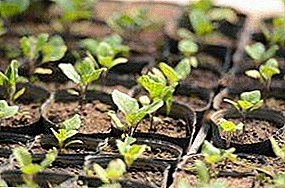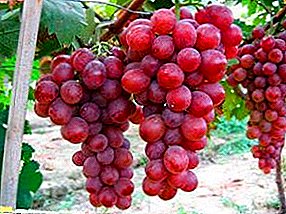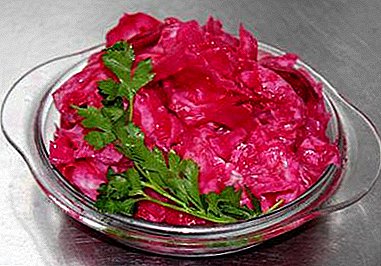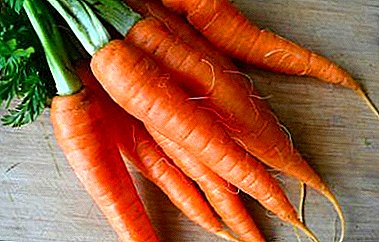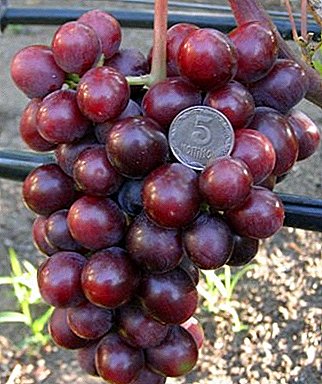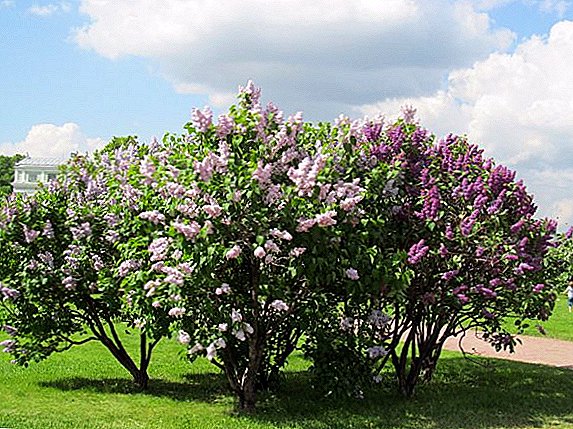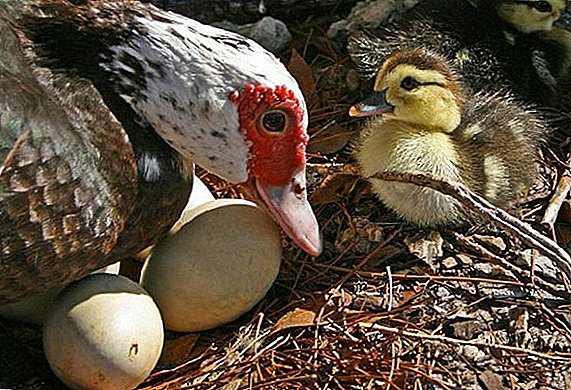 People knew for a long time about the influence of the moon on all life that inhabit our planet, and when planning their field work, it was not at all surprising that our ancestors involved in growing agricultural plants tried to focus not only on weather conditions, but also on the phases of the “small star”.
People knew for a long time about the influence of the moon on all life that inhabit our planet, and when planning their field work, it was not at all surprising that our ancestors involved in growing agricultural plants tried to focus not only on weather conditions, but also on the phases of the “small star”.
Oddly enough, the sowing lunar calendar has not lost its relevance in the modern period of intensive development of new technologies and scientific discoveries. This review contains detailed information on how the Moon will influence the conduct of various planting and planting activities in August 2019, as well as a detailed lunar calendar of the gardener and the gardener for this period.
What work needs to be done in the garden in August
August is the traditional time for harvesting and the start of organizing winter harvesting (pickling, pickling, drying, freezing, etc.). However, for a good gardener and a gardener, the last month of summer is also associated with carrying out large-scale preparatory work, which should ensure a rich harvest next year.
Did you know? The period of the so-called Indian summer in Russia begins September 1 in the old style or September 14 in the modern calendar. According to one version, the name of this period is associated with the starry sky: it turns out, from September 1 to September 8, the constellation Pleiades disappears from sight, which among the Slavs had several other names, including Stozhary and Baba.
In particular, it is for August that you can plan such works as:
- grafting fruit trees;
- rooting cuttings;
- vegetative propagation of fruit bushes by air layouts;
- garden treatment for wintering pests and diseases;
- cleaning the area of organic residues (also an important preventive measure in the fight against diseases and pests);
- planting siderats on areas freed from garden crops (in warmer regions at this time it is still possible to plant some fast-growing plants that will have time to harvest before the onset of cold weather, for example, greens, radishes, lettuce, etc.);
- top dressing of perennial plants;
- pinching of indeterminate tomatoes to accelerate the ripening of the remaining fruit on the bushes;
- seed collection for planting next year;
- planting strawberries, removing whiskers, the sockets on which would still not have time to take root;
- pruning and removal of root shoots of trees and shrubs, removal of raspberry-bearing shoots;
- harvesting pits for spring planting of trees;
- sanitary pruning of trees and shrubs;
- digging gladiolus bulbs for winter storage (in regions with cold climates);
- reproduction of flowers by dividing rhizomes;
- planting seedlings of biennial and perennial flowers.
 Owners of greenhouses, especially heated ones, in addition to the works mentioned above, still have time to plant vegetable and green plants in August in order to harvest the last full harvest by the end of autumn.
Owners of greenhouses, especially heated ones, in addition to the works mentioned above, still have time to plant vegetable and green plants in August in order to harvest the last full harvest by the end of autumn.Favorable and unfavorable landing days in August 2019
When determining favorable and unfavorable days according to the lunar calendar, any gardener should know that the answer to this question depends on the specific type of work and the plant in relation to which it is being carried out. For example, one and the same day may be excellent for planting onion crops, but at the same time be an extremely unfortunate period for sowing seeds or transplanting seedlings.
Did you know? According to the Old Roman calendar, which was used in Russia in the period of paganism, August was not the eighth, but the sixth month of the year, then, in the 10th century, with the adoption of Christianity by Russia, it became the twelfth. The modern issue of August 8 “received” thanks to the reform of Peter I, who by his highest decree ordered to commemorate the New Year not on September 1, as it was before, but on January 1.
For example, to plan the main activities in the garden for August 2019 should be subject to the recommendations outlined in the table below:
| Type of work | Favorable period (calendar days of the month) | Adverse period (calendar day of the month) |
| Harvesting potatoes and other root vegetables | 2, 24, 25 | 1, 15, 26, 27, 29, 30, 31 |
| Collection of fruits, berries, seeds | 2, 10, 19, 20, 24, 25, 28 | 1, 15, 29, 30, 31 |
| Preparations for the winter (canning, pickling, pickling) | 2, 8, 10, 12, 13, 21, 22, 23, 24, 25, 26, 27, 28 | 1, 6, 15, 29, 30, 31 |
| Pruning trees | 1, 21, 22, 23, 28 | 2, 9, 15, 16, 17, 18, 29, 30, 31 |
| Tree planting | 2, 11, 12, 16, 17, 18 | 1, 14, 15, 19, 20, 29, 30, 31 |
| Watering, feeding | 2, 3, 4, 5, 6, 7, 8 | 1, 14, 15, 16, 17, 18, 19, 20, 29, 30, 31 |
| Plant transplant | 2, 5, 6, 7, 9, 10 | 1, 12, 15, 21, 22, 23, 24, 25, 29, 30, 31 |
| Sowing seeds | 2, 5, 7, 8, 9, 11, 12, 13, 21, 22, 23, 24, 25, 26, 27 | 1, 14, 15, 29, 30, 31 |
| Budding (vaccination) | 2, 12, 13 | 1, 15, 29, 30, 31 |
The influence of the moon phase on plants
It’s impossible to remember all the above information, of course, but it’s quite realistic to “digest” and assimilate. Knowing exactly how the moon influences the development of a plant, one can, without resorting to additional clues and literally looking at the sky (although it should be done late at night or at night), without problems, determine the plan of garden work for the next few days.  However, before talking about the phases of the moon from the point of view of choosing favorable and unfavorable days for carrying out this or that type of work, one important caveat should be made: in drawing up the lunar sowing calendar, not only the motion vector of a small star is always taken into account in the direction of growth and decrease, and the one in which the sign of the zodiac is at the moment the earth satellite.
However, before talking about the phases of the moon from the point of view of choosing favorable and unfavorable days for carrying out this or that type of work, one important caveat should be made: in drawing up the lunar sowing calendar, not only the motion vector of a small star is always taken into account in the direction of growth and decrease, and the one in which the sign of the zodiac is at the moment the earth satellite.
Important! There are so-called inferior signs of the zodiac, during the stay of the moon in which experts recommend to refrain from any field work, and, on the contrary, signs most favorable to their conduct.
The twelve signs of the zodiac according to the degree of their influence on the main events held in the garden and the vegetable garden can be divided into three groups - positive, negative and neutral:
| Good signs | Bad signs | Neutral signs |
| Fish Cancer Scorpio | Sagittarius Virgo Leo Aquarius Gemini Aries | Libra Capricorn Taurus |
This information is better for a novice gardener to just remember. As for the phases of the moon and their effects on plants, there are quite understandable and understandable patterns.
New moon
A new moon (as well as a full moon) is a period in which plants should not be disturbed at all. Virtually any garden work carried out on this day, as well as the previous and next, is doomed to a bad result. However, the reasons why this happens are relatively new and full of the moon.  So, on the New Moon, all life on the planet is in the most relaxed state, as if falling asleep. The seed thrown during this period will most likely not ascend, the transplanted plant will not be taken, the cut one will fall ill.
So, on the New Moon, all life on the planet is in the most relaxed state, as if falling asleep. The seed thrown during this period will most likely not ascend, the transplanted plant will not be taken, the cut one will fall ill.
Check out the lunar calendar gardener and gardener in September 2019.
That is why, in the phase of the new moon, of all the field work, weeding is only permissible, since the lunar calendar does not matter for weed control. Otherwise, on this day it is better to just relax, especially since people are influenced by the earth's satellite no less than plants. In August 2019, the new moon falls on the first day of the month.
Growing
With the beginning of the growth of the moon, plants gradually awaken, and the vector of their development is directed from the roots upwards. The growing moon is associated with the period of tides, thus, it is very easy to remember the basic rule: water rises, and along with it, the vital sap of plants moves.  Thus, in the phase of the growing moon, the above-ground part of garden crops — the stems, shoots, leaves, and fruits — receive maximum development. During this period, flowering usually begins, so in August the blooming of chrysanthemums, dahlias, asters and other late ornamental flowers can be expected just a few days after the new moon.
Thus, in the phase of the growing moon, the above-ground part of garden crops — the stems, shoots, leaves, and fruits — receive maximum development. During this period, flowering usually begins, so in August the blooming of chrysanthemums, dahlias, asters and other late ornamental flowers can be expected just a few days after the new moon.
Important! In the growing moon phase, the beds and flower beds need plenty of watering, because the roots need a lot of moisture to transfer the maximum amount of nutrients to the stems and leaves.
For the rest, the growing moon is a great moment for a gardener to:
- budding;
- grafting and rooting of air layers;
- sowing of seeds of plants characterized by rapid germination and subsequent growth;
- transplantation and reproduction of plants by dividing the bush (since the root system of plants during this period is not in the stage of intensive growth and development, the risk of damaging it is minimized);
- sprinkling (foliar irrigation).
At the same time, the period under consideration is categorically not suitable for pruning and other procedures related to damage to the aerial part of horticultural crops: intensive sap flow in these organs will lead to the fact that the "wounds" will not heal for a long time, moreover, it stands out from the stems and branches the liquid attracts all sorts of pests to plants and is often the cause of the development of various kinds of infections.  In August 2019, the growing moon will last from the 2nd to the 14th, and then, after the full moon, a new phase of growth will begin from the 31st.
In August 2019, the growing moon will last from the 2nd to the 14th, and then, after the full moon, a new phase of growth will begin from the 31st.
Full moon
The development of the above-ground part of the plants reaches its maximum stage on the full moon day, but it is this circumstance that makes experienced gardeners and gardeners not to disturb their “wards” in the most active period of their life. Pruning cannot be done on this day. for the reasons already mentioned above, however, for planting, transplanting, planting, and other procedures associated with a certain stress for horticultural crops, the full moon does not fit just the same as the new moon.
In general, it can be said that the phases of the new and full Moon are two extremes, two poles, on which plants, although for various reasons, it is better not to disturb: in the first case, not to "wake up", in the second - not " cut "at the peak of maximum activity.
Did you know? The full moon has long been a scarecrow and at the same time attracted people. It was believed that it was on this night that all evil spirits got out of their shelters and began to create their black deeds, so our ancestors tried not to go out during this period, but they enthusiastically wondered, enthralled, performed various rites and sacraments just under the full Moon.
However, for harvesting those crops that are valued for their aerial parts, the full moon is ideally suited (by the way, it is on this “magic” night that herbalists and traditional healers always collect medicinal raw materials for their medicines, knowing well that the concentration of nutrients in herbs, flowers and fruits in this period reaches its maximum value). In August 2019, the full moon falls on the 15th of the month. 
Decreasing
The phase of the waning moon is inherently the opposite of its growth period. The vital vector at this time from the top point, which is the day of the full moon, is sent in the opposite direction - from the stems and leaves to the roots (the waning Moon is a period of ebb, water decline, a decrease in its level).
Read more about the features of planting seedlings on the lunar calendar of the gardener and the gardener.
It is the root system of plants on the waning moon that develops as intensively as possible, and therefore during this period it will be very correct:
- harvest root crops, as well as harvesting tubers and bulbs for future planting (the closer to the new moon this work is done, the more nutrients will be concentrated in the collected material);
- cut flowers to form bouquets (they will stay fresh for a long time);
- cut trees and shrubs (this procedure should be carried out in the completion of the phase of the waning moon so that the sap flow has enough time to slow down);
- plant crops, breeding tubers and bulbs;
- reproduction by root layering;
- apply fertilizer to the soil.

Gardener's lunar calendar for August 2019 by day
In August 2019, the movement of the natural satellite of the Earth will look like this:
The first decade of August:
| Calendar dates | Phase of the moon | Zodiac sign |
| 1 | New moon | a lion |
| 2 | Growing | a lion |
| 3-4 | Growing | Virgo |
| 5-6 | Growing | Libra |
| 7 | First quarter | Scorpio |
| 8 | Growing | Scorpio |
| 9-10 | Growing | Sagittarius |
| Calendar dates | Phase of the moon | Zodiac sign |
| 11-13 | Growing | Capricorn |
| 14 | Growing | Aquarius |
| 15 | Full moon | Aquarius |
| 16-18 | Decreasing | Fish |
| 19-20 | Decreasing | Aries |
The third decade of August:
| Calendar dates | Phase of the moon | Zodiac sign |
| 21-22 | Decreasing | Taurus |
| 23 | Third quarter | Taurus |
| 24-25 | Decreasing | Twins |
| 26-27 | Decreasing | Crayfish |
| 28-29 | Decreasing | a lion |
| 30 | New moon | Virgo |
| 31 | Growing | Virgo |
Tips experienced gardeners and gardeners
When using the lunar calendar, experienced gardeners and gardeners advise beginners to follow these important rules:
- Plan the main work in advance, first compiling a list of major events and only then checking with information about the movement of the heavenly body. Only in this way you can not miss anything.
- Before contacting the lunar calendar, you need to examine the gardener's usual calendar for the current month.taking into account not only general recommendations, but also the climatic features of the area, as well as specific crop varieties that are cultivated or planned for cultivation on the plot. For example, the fruits of some fruit trees, especially late ripening, are best left on the tree for as long as possible, while others, on the contrary, should be harvested for longer shelf life.
- It is better not to study the lunar calendar "in general", but in terms of the characteristics of caring for specific plants. (as already mentioned, successful and unsuccessful days for planting different crops may not coincide).
- Working with the lunar calendar, it should be remembered that it is generally the same for the whole Earth, however certain inaccuracies can still occur. This is due to the difference in time zones, and to be more precise, with the so-called date change line: if a successful and unsuccessful day for performing a certain work follows each other, you need to consider in which time zone the plot is located .
- "Lunar" rules are not always categorical. In order not to be mistaken and not entangled in various reservations (phase of the moon, day of the lunar month, zodiac sign, etc.), you can simply immediately identify and discard the most unfavorable period for work - for example, the days of the new moon and full moon, and otherwise on the situation ", including the weather, the availability of free time, the state of health and, importantly, the mood: irritability or absent-mindedness during gardening can do much more harm than ignoring the location of the moon on a star baa.
- Whatever the recommendations of the lunar calendar, they do not cancel the basic agrotechnical rules: for example, harvesting potatoes and other root crops is necessary in dry weather, while being late with harvesting means losing the harvest. The defining moment in determining the appropriate period for similar and other works is the weather, and the moon is a minor factor.
 Using the lunar sowing calendar when working in the field, garden or on the plot is a kind of aerobatics, but only in the case when its prescriptions do not turn into the only criterion that guides the gardener. The moon, of course, has a certain effect on plants, but still it is much less than the appropriate soil composition, watering, lighting, and temperature.
Using the lunar sowing calendar when working in the field, garden or on the plot is a kind of aerobatics, but only in the case when its prescriptions do not turn into the only criterion that guides the gardener. The moon, of course, has a certain effect on plants, but still it is much less than the appropriate soil composition, watering, lighting, and temperature.Did you know? On the moon, the change of day and night occurs instantly, without a gradual transition, to which we are accustomed as to the morning or evening twilight. This interesting feature, according to scientists, is associated with a lack of atmosphere.
That is why if during a planned work in August or any other month the gardener cannot fulfill absolutely all the recommendations of the lunar calendar, there is no need to panic about it: this may affect the quantity and quality of the harvest, but not in a critical way .


